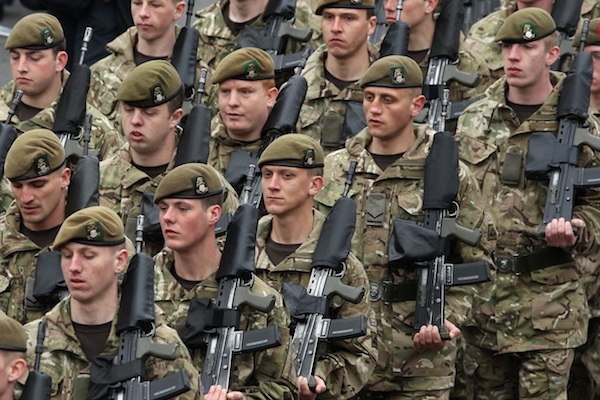There is some consternation with the defence secretary today, who has indicated, in as much detail as he can at this stage, how the regular army will be reduced from a permanent establishment of 102,000 men to 82,000 men by 2020. You get a flavour of the disquiet on the Army’s anonymous message board service, where there is some anger that regular soldiers’ duties will be ‘outsourced’ to ‘contractors’ as and when required. Some servicemen, both on and off the message boards, are stumped by the government’s strategic logic. If the army lacked the strength and resources to hold positions in Basra and Helmand, then why is it cutting troop numbers still further, even if the majority of those are support troops? The answer seem obvious: Britain will not be seeking to project its power to quite the same degree in future.
There is also some shock that the two Ghurkhas battalions have been spared when equally historic county regiments are to be amalgamated. The overwhelming bulk of losses will fall on units that recruit in the north of England and the midlands. The Yorkshire Regiment and the Mercian Regiment will each lose an infantry battalion from their strength, while the Queen’s Division, which recruits from the east of England, will lose a battalion. The remaining cuts will be made in Scotland (the Argyll and Sutherland Highlanders appear doomed to disbandment) and in Wales (where the 1st Queen’s Dragoon Guards will join the Royal Scots Dragoon Guards, itself the product of past amalgamations).
In a speech to the Royal United Services Institute earlier today, Philip Hammond explained the demographic reasons behind these changes. He said:
This is why southern units have not been touched (although it does not account for the Ghurkhas’ salvation, which the MoD ascribes to that old canard ‘sound strategic reasons’). The danger of this approach is that it might reinforce the sense that the Tories are exacerbating the north/south divide.‘The truth is, that even with a reduced Regular manning requirement, the Army faces a major recruitment challenge, and this includes the infantry. Looking forward to 2020, the Army will recruit against the backdrop of, we hope and expect, a growing economy, and without the recruiting-sergeant of an enduring overseas operation. Demographic changes suggest particular challenges in some regions to supply the number of recruits to the infantry that are required. Against a background of an increasing UK population overall, it is projected there will be around 12 per cent fewer males by 2020 in the typical infantry recruiting age range. Although all regions face this decline, there is local variation: in particular, the south and south east of England will see the lowest decline.’






Comments